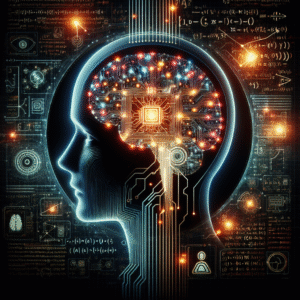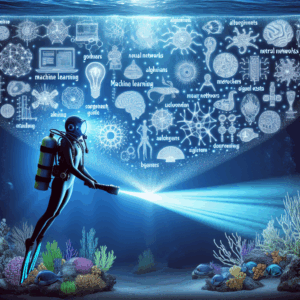Artificial Intelligence (AI) is rapidly transforming the landscape of technology, reshaping industries and influencing everyday life. For newcomers, diving into AI might seem daunting, but the journey can be rewarding. This guide aims to demystify AI for absolute beginners, providing a step-by-step approach to understanding and engaging with this fascinating field.
Understanding AI: The Basics
AI represents the capability of machines to mimic human intelligence. It encompasses various technologies that enable machines to learn from experience, adapt to new inputs, and perform tasks that normally require human intellect. These tasks include recognizing images, understanding natural language, and making decisions.
Key Terminologies
-
Machine Learning (ML): A subset of AI that involves training algorithms to learn from and make predictions or decisions based on data.
-
Neural Networks: Structures that mimic the human brain, forming the foundation of most AI systems. They process complex data and are instrumental in deep learning.
-
Deep Learning: A type of ML involving neural networks with many layers. It’s particularly effective in tasks such as image and speech recognition.
- Natural Language Processing (NLP): Enables machines to understand and respond to text or voice data in natural language.
Understanding these core concepts is crucial for anyone beginning their journey into AI.
Getting Started with AI
Step 1: Define Your Goals
Before diving into AI, it is essential to define what you want to achieve. Are you interested in using AI for a specific project, or are you aiming to build a career in the field? Your goals will shape your learning path.
Step 2: Get Familiar with Data
Data is the backbone of AI. Spend time understanding different types of data and how they are collected and processed. Familiarize yourself with basic statistics as it is vital for analyzing data.
Step 3: Learn the Basics of Programming
Programming is an essential skill for AI. You don’t need to be an expert, but a basic understanding of programming languages like Python is crucial. Python is particularly popular in AI due to its simplicity and the vast number of available libraries, such as TensorFlow and PyTorch.
Step 4: Explore AI Concepts and Algorithms
Begin with the foundational concepts of AI and gradually move to more complex topics. Online resources, courses, and textbooks can be instrumental here. Focus on understanding:
- Supervised Learning
- Unsupervised Learning
- Reinforcement Learning
These are the core methods by which machines learn patterns and make decisions from data.
Practical Steps Toward AI Development
Step 5: Work on Projects
Hands-on experience is invaluable. Start with small projects like developing a simple chatbot or a basic image recognition system. Utilize platforms like Kaggle, which offer datasets and competitions to hone your skills.
Step 6: Join AI Communities
Engagement with communities can significantly accelerate your learning. Platforms like GitHub, Stack Overflow, and Reddit have active AI discussions. Participating in these communities can provide you with support, feedback, and opportunities to collaborate.
Step 7: Continuously Learn and Update
AI is a rapidly evolving field. Continuous learning is essential. Follow AI blogs, join webinars, and subscribe to AI research journals to stay updated on the latest trends and advancements.
Challenges and Considerations
Understanding Ethical Implications
AI brings with it ethical considerations such as bias, privacy, and the potential for misuse. Understanding these aspects is critical to developing and implementing AI responsibly.
Tackling Data Privacy
Data privacy is a significant concern in AI. Ensure you understand the principles of data protection and comply with regulations like GDPR.
Overcoming the Learning Curve
The AI learning curve can be steep, but persistence is key. Leverage free resources, online courses from platforms like Coursera or edX, and engage in peer learning to conquer challenges.
Tools and Resources
To aid your journey, familiarize yourself with popular AI tools and libraries:
- TensorFlow: A powerful open-source library for deep learning.
- PyTorch: Known for its flexibility, particularly useful for deep learning research.
- Scikit-learn: Ideal for beginners, it offers simple and efficient tools for data analysis and machine learning.
- Keras: A high-level neural networks API, written in Python and capable of running on top of TensorFlow.
Conclusion: Your AI Journey
Unlocking the potential of AI requires dedication, curiosity, and a willingness to engage with complex concepts. Start with a solid foundation, build practical experience, and continuously seek out knowledge and community engagement. The path to mastering AI is a journey of continuous learning, demanding but ultimately rewarding.
By understanding the basics, defining your goals, and leveraging the right tools and resources, you can begin making meaningful contributions to the field of AI. Whether you aim to apply AI to solve practical problems or drive cutting-edge research, the possibilities are limitless.
Embark on your AI adventure today and become part of a technological revolution that is shaping the future. Whether you’re a student, a professional looking to upskill, or simply an enthusiast, AI holds exciting potential and opportunities for everyone willing to unlock its secrets.




